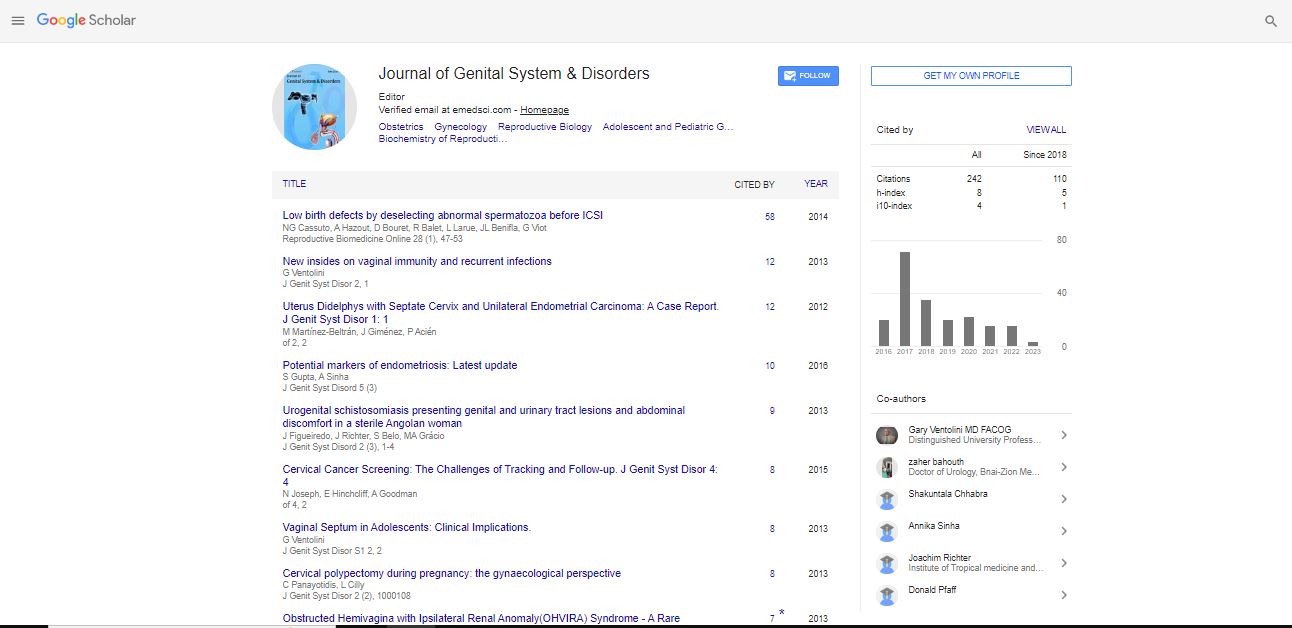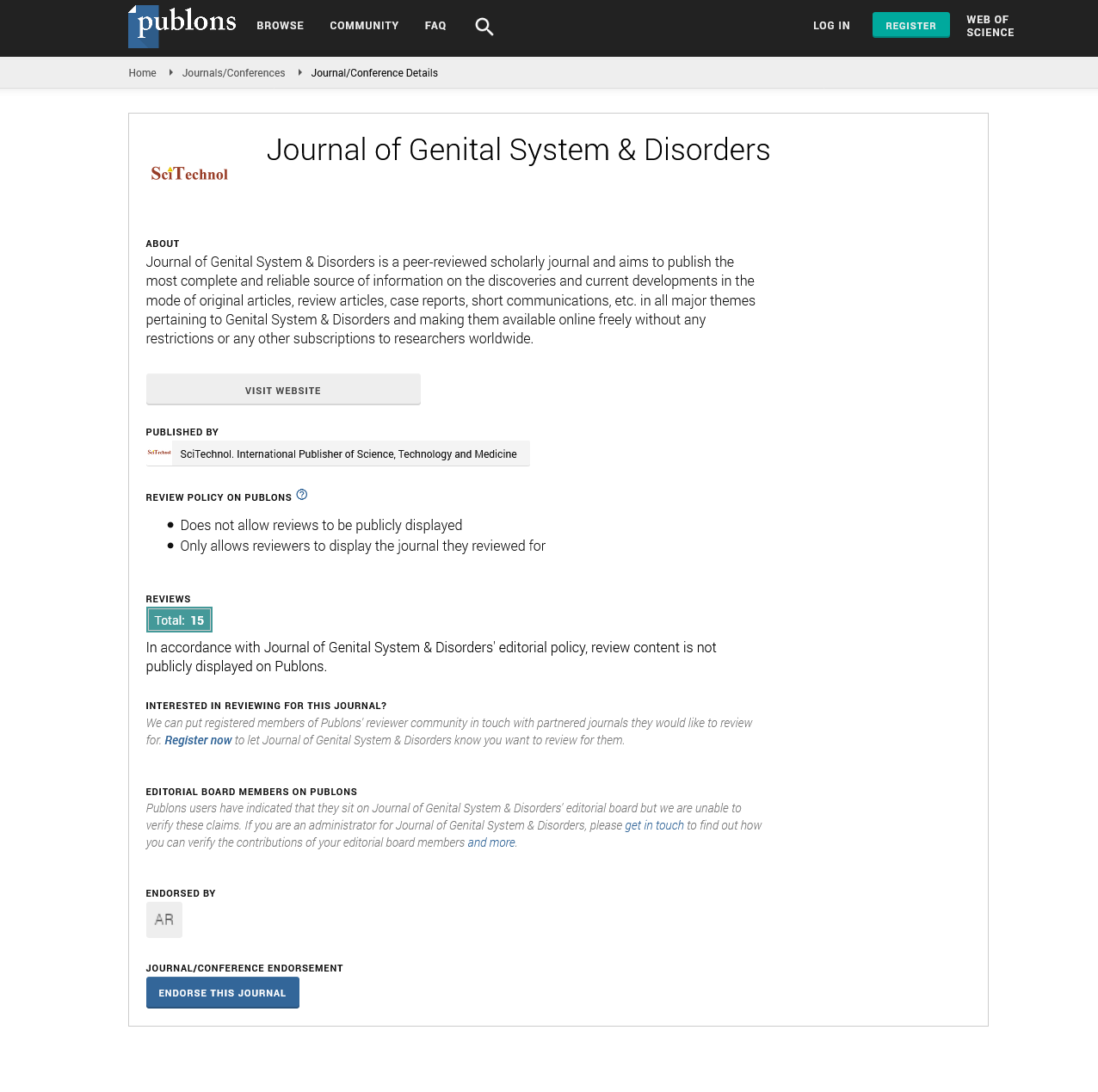Commentary, J Genit Syst Disord Vol: 12 Issue: 2
Human Papillomavirus Cancer Effect on Pregnancy
Louisey Carlandar*
Department of Otorhinolaryngology, University Hospital of Copenhagen,Copenhagen, Denmark
*Corresponding Author: Louisey Carlandar
Department of Otorhinolaryngology, University Hospital of Copenhagen, Copenhagen, Denmark;
E-mail: Louisey.Carlandar@regionh.dk
Received date: 11 January, 2023, Manuscript No. JGSD-23-86803;
Editor assigned date: 13 January, 2023, PreQC No. JGSD-23-86803 (PQ);
Reviewed date: 27 January, 2023, QC No JGSD-23-86803;
Revised date: 18 April, 2023, Manuscript No. JGSD-23-86803 (R);
Published date: 25 April, 2023, DOI: 10.4172/2325-9728.1000277
Citation: Carlandar L (2023) Human Papillomavirus Cancer Effect on Pregnancy. J Genit Syst Disord 12:2
Description
This finding raises the possibility that hormonal or other pregnancy related changes could activate HPV infection, which could help to explain why having more babies is known to increase the risk of cervical dysplasia and cancer. Several studies have found that pregnant women with HPV are more likely to experience unfavorable outcomes, with the clinical impact including preterm birth, miscarriage, Pregnancy-Induced Hypertensive Disorders (PIHD), and Intrauterine Growth Restriction (IGR). Many Sexually Transmitted Infections (STIs) can cause infertility if left untreated. Without causing any health issues, HPV disappears on its own after two years. However, if HPV is left untreated, it can lead to cancer and other health issues including genital warts. A little bump or cluster of bumps in the vaginal area is the typical appearance of genital warts. Growths on the skin known as skin warts are brought on by the Human Papillomavirus (HPV). There are numerous forms of HPV infection, some of which might result in warts. Common warts, plantar warts, and flat warts. Localized treatment options include trichloroacetic acid application, surgical or laser excision, or both. It is not advised to use podophyllin or podophyllotoxin during pregnancy. The presence of HPV does not warrant caesarean birth because there is no evidence that this prevents vertical transmission. Guidelines for cervical cancer screening in pregnancy should be followed in cases where cervical cancer was discovered during routine screening.
While research on those who were unintentionally immunised while pregnant have not revealed any negative effects on either the mother or the foetus, vaccination is still not advised for pregnant women. The most common ways to contract HPV are through oral gender, anal gender, or vaginal gender. The virus can be transmitted through vaginal contact without penetration or by touching the genitalia, however, this seldom happens. A mother can also pass HPV to her unborn child after delivery, but this is extremely rare. The feto maternal interface undergoes structural and molecular alterations that support and shield the semiallogeneic foetus from immune or inflammatory-mediated damage. However, the placenta's trophoblast cells promote HPV proliferation, and both the condition of the placenta and vaginal infections are closely related to the success of pregnancies.
Therefore, HPV screening during pregnancy may be beneficial to achieving better outcomes for child health care and reproductive health. Therefore, it is crucial to comprehend how HPV affects early pregnancy, immune cells at the feto maternal interface are trained for self-clearance to fulfil their biological functions, or prevalence to influence the outcomes of pregnancies, and how the persistence of HR-HPV infection over time raises the risk of cervical cancer development.
 Spanish
Spanish  Chinese
Chinese  Russian
Russian  German
German  French
French  Japanese
Japanese  Portuguese
Portuguese  Hindi
Hindi 
